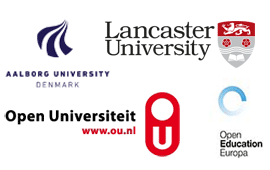

Effective team formation in networked learning settings
Howard Spoelstra, Peter van Rosmalen, Welten Institute, Open University of the Netherlands
Professional development can be achieved by interacting with the abundance of learning materials provided by Internet-based services and by collaborating with other learners. However, knowledge sources are scattered across the Internet, while suitable co-learners are hard to find. Learning professionals require strong self-direction powers to fully benefit from these resources. However, these are not readily available in all learners. Based on social-constructivist/connectivist collaborative learning theory and team formation theory, a model is presented for the effective formation of teams engaging in structured collaborative learning. The model describes the creation knowledge domain representations by centralising learning materials from various sources. It allows learners to define structured learning tasks and provides an answer to the question whether a particular learning task can be addressed sufficiently well in the knowledge domain. Based on team formation theory, it provides the means to form teams of mutual learners and peer-teachers based on bridgeable knowledge differences (an interpretation of Vygotsky's "zone of proximal development") and personality aspects. The model also allows recommending suitable learning materials to the teams. A selection of tools is presented to afford an implementation of the model. These consist of an implementation of the method of Latent Semantic Analysis, a validated learning team formation algorithm and the Big Five personality test. The model is subsequently tested. The results of this test indicate that representations of knowledge domains can be successfully created and that the fit of learning tasks to the learning materials in the domain can be assessed. An experiment with learners (n=64) shows that the implementation can successfully assess prior knowledge and that collaborations based on prior knowledge differences do lead to knowledge gains. Furthermore, learners highly appreciate the learning materials suggested. However, the evidence for a level of knowledge difference between learners at which learning becomes most effective is currently limited. The results are discussed, and conclusions and directions for future research are included.
Keywords
eam formation, self-directed learning, collaborative networked learning, professional development
Joint Organising Institutions
| Conference Travel and Accommodation |Doctoral Consortium | Past Conference Proceedings | Contact |